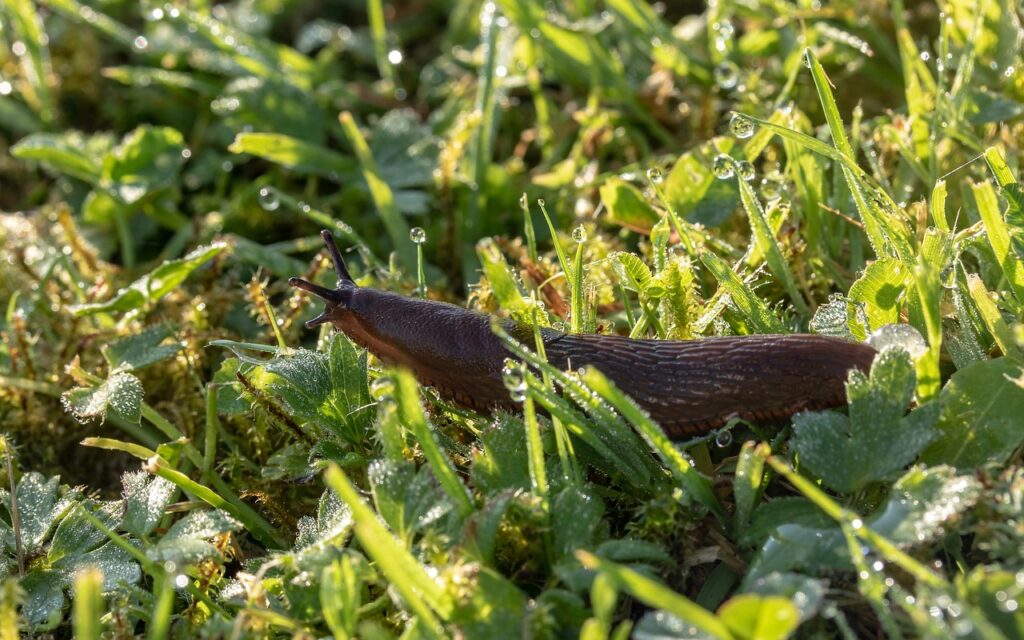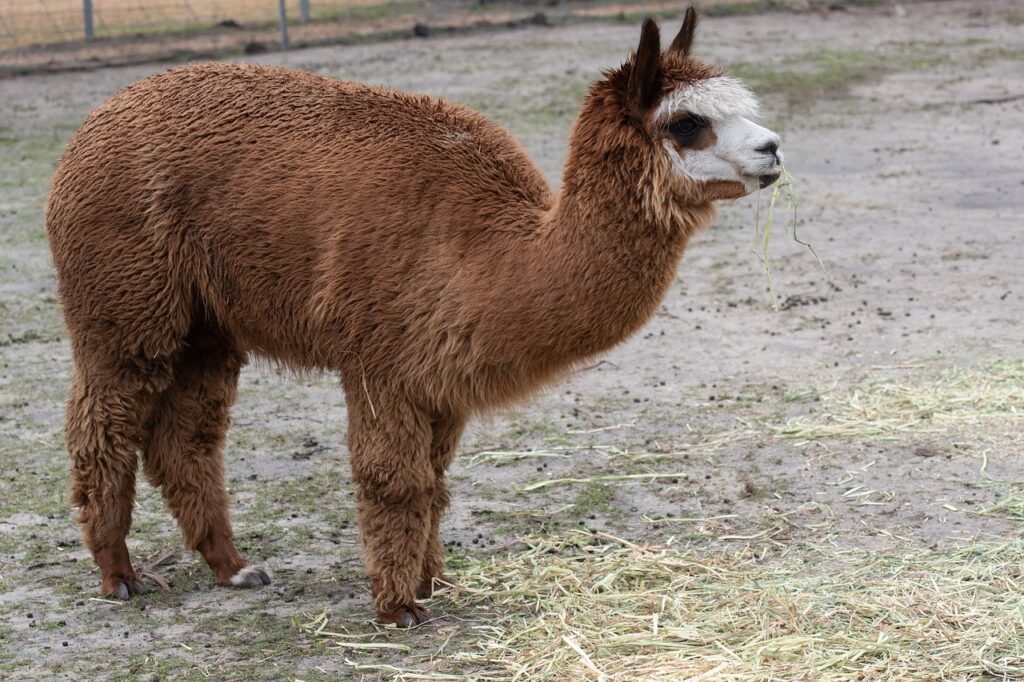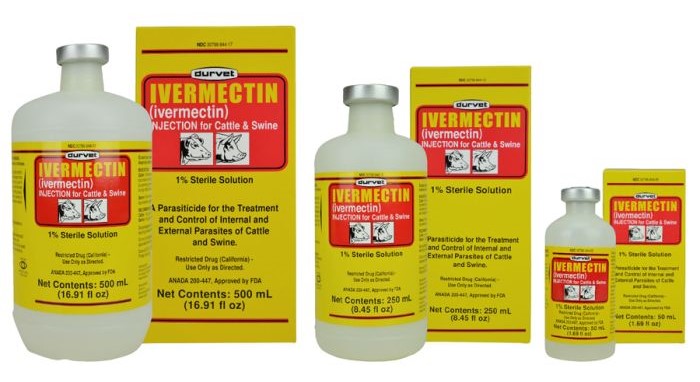While alpacas are relatively disease-resistant, there are a few conditions that owners need to be aware of. One of these is meningeal worm, which can have potentially fatal consequences if left untreated.
Meningeal worm is a parasite that affects the central nervous system of alpacas. The larvae of this worm are transmitted through ingestion. Once transmitted, the larvae migrate through an alpaca’s body until they reach the spinal cord and brain. If left untreated, meningeal worm can cause neurological damage and even death in alpacas.
In this blog post, we will provide an overview of meningeal worm and what you can do to protect your alpacas from this potentially deadly parasite.
Where does meningeal worm come from?
Meningeal worm (Parelaphostrongylus tenuis) is a parasite commonly found in white-tailed deer. As the typical host, white-tailed deer typically endure the parasite without showing any adverse reactions or signs of disease. However, alpacas, along with other camelids, can easily become infected and develop a severe neurological disease that affects the central nervous system.
This parasite is often passed in a deer’s feces and picked up by snails and slugs. Alpacas can obtain the parasite when they eat these small snails or slugs on pasture grasses. Meningeal worm, or m-worm, is very difficult to control once it reaches an alpaca’s central nervous system, so it’s important to protect your herd from potential transmission.

Meningeal worm in alpacas comes with a high mortality rate due to damage caused to the central nervous system by the parasite. M-worm is most commonly a concern in areas of North America that house populations of white-tailed deer.
What does meningeal worm do to alpacas?
When an alpaca ingests meningeal worm larvae, the larvae penetrate the alpaca’s intestine and begin a journey through the animal’s tissues toward the spinal cord. On average, it takes one of these little parasites about 30 days to reach the spinal cord of a camelid.
The severity of symptoms can vary greatly from one alpaca to the next. Symptoms of m-worm infection in alpacas include loss of coordination, muscle weakness, and paralysis. In severe cases, the parasite can even cause death.
Although meningeal worms often destroy spinal tissue, they may also migrate to the brain and potentially cause blindness, seizures, and abnormal behavior, among other issues. In order to prevent these problems, it is important to preventatively treat alpacas and regularly check for signs of infection.
In addition, keeping their pastures clear of deer and snails/slugs when possible will certainly mitigate the risk of m-worm. This can be done by installing proper fencing and even placing a border of gravel on the perimeter of the pasture to discourage snails/slugs from crossing.
How to spot meningeal worm in alpacas
Common signs that an alpaca has been infected with a meningeal worm include weakness in the hind legs, stiff or awkward mobility, lethargy, and difficulty standing.
M-worm can often be diagnosed based on symptoms, though it’s important to note that m-worm symptoms can closely resemble symptoms from other common health concerns such as spinal cord injuries, thiamine deficiencies, etc.
The sooner you can spot m-worm in an alpaca, the sooner you can begin treatment and the better the chances for recovery. If caught early enough and treated properly, alpacas can make a full recovery. In some cases, partial recovery is possible, but there can be some lingering issues, such as limping, stiffness, and loss of sight.

Unfortunately, many alpacas that get m-worm are not diagnosed early on. This is often due to the fact that alpacas are relatively good at hiding their illnesses. So it’s important to carefully observe your animal’s behaviors and mannerisms and to act quickly if anything changes.
How to prevent meningeal worm in alpacas
Since m-worm larvae take about 30 days to reach the spinal cord, it’s imperative to proactively treat them for possible infection. Once the m-worm reaches the spinal cord, it’s very difficult to treat because the spinal cord and brain are protected by three layers of membranes known as meninges, which essentially help form a blood/brain barrier. This barrier stops many chemicals from entering the central nervous system.
Ivermectin and Dectomax help prevent meningeal worm
Ivermectin and Dectomax are two of the most commonly used preventative treatments for m-worm. Both of these drugs will kill m-worm parasites, but they cannot pass the blood/brain barrier – so doses must be administered every 30 days to eliminate any potential meningeal larvae in the animal’s system.
In other words, there is a 30-day window when meningeal worm larvae will be traveling from an alpaca’s stomach to the spinal cord. When a proper dose of Ivermectin or Dectomax is given, it kills any m-worm larvae the alpaca has eaten in the past 30 days – it does not protect them for the next 30 days.
Essentially, Ivermectin and Dectomax give the animal’s system a shock that will kill any m-worm larvae ingested in the past 30 days. The frequency of this preventative treatment is not determined by how long the drug stays in an animal’s system but rather by how long it takes for a worm to get to the meninges. Once the meningeal worm has passed through the meninges into the spinal cord, these drugs cannot reach it to kill the parasite off.
The difference between Ivermectin and Dectomax
Ivermectin is absorbed into an alpaca’s system relatively quickly, reaching peak blood and tissue levels in about 24 hours and leaving the system in nearly 48 hours. It quickly kills the unwanted m-worm parasites and leaves the body just as fast.
Dectomax, on the other hand, is less potent than Ivermectin and is absorbed into an alpaca’s system much slower. It takes about 10-13 days to reach peak blood and tissue levels in an alpaca. And after peaking, Dectomax takes 3-4 weeks to completely leave an alpaca’s system.
Both Ivermectin and Dectomax are effective in preventing m-worm in alpacas; however, Ivermectin is generally accepted as the better of the two. It’s quicker, more powerful, and leaves the animal’s system faster.

We suggest that if you live in an area with any white-tailed deer, you administer Ivermectin to each animal once every 30 days. Ivermectin should be given in doses of 1cc per 70lbs of the alpaca’s weight.
How to treat alpacas with meningeal worm
Meningeal worm in alpacas is a very serious problem. If you suspect that an animal in your herd has meningeal worm symptoms, we recommend contacting an experienced camelid veterinarian immediately. Treatment plans can vary depending on the animal and its condition. Effective treatments often include Safeguard, Banamine, Thiamine, vitamin Es, and vitamin Bs.
Safeguard is a dewormer that is capable of passing through the blood/brain barrier and kills the m-worm parasites present in the central nervous system – making it a good option for treating m-worm.
In reality, the best treatment is proactive prevention. But if you find yourself with an animal that is showing signs of meningeal worm infection (loss of coordination, muscle weakness, limping in the back legs), contact a vet as soon as possible. It is important to speak to a veterinarian before beginning treatment – an experienced vet can recommend the most effective course of action and make sure that the treatment is safe for your alpaca.
Conclusion
Meningeal worm is a serious condition that can have fatal consequences for alpacas if left untreated. However, by being aware of the signs and symptoms of this condition and taking steps to prevent it, you can help keep your alpacas safe from harm. If you think your alpaca may be infected with meningeal worm, don’t hesitate to contact your veterinarian for treatment.


